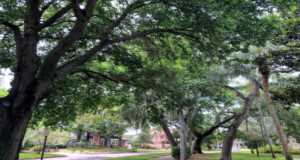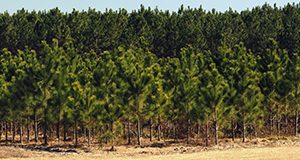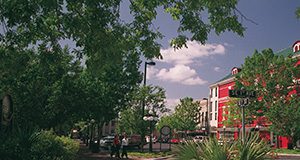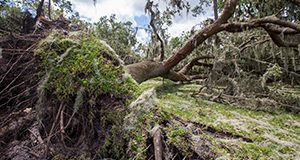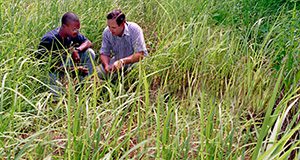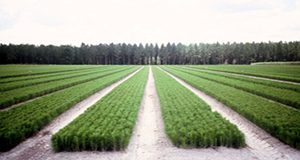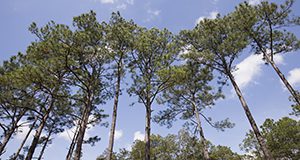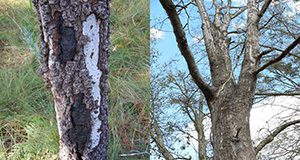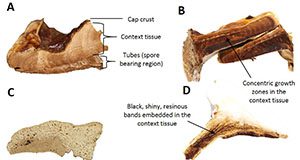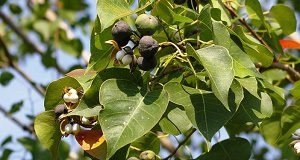This 4-page publication presents a straightforward and intuitive approach based on compounding costs to determine the timber value of a forest at any stage of its development. Written by Andres Susaeta, and published by the UF/IFAS School of Forest, Fisheries, and Geomatics Sciences, March 2021.
https://edis.ifas.ufl.edu/fr435
Category: Forest Resources
Florida’s Urban Forest: A Valuation of Benefits
This new 13-page article combines canopy coverage data from all of Florida’s metropolitan and micropolitan areas with ecological models developed by the USDA Forest Service to calculate several key benefits of urban trees and an approximation of their monetary value. Benefits of urban trees include carbon sequestration/storage, air pollution filtration, and stormwater mitigation. Written by Drew C. McLean, Andrew K. Koeser, Deborah R. Hilbert, Shawn Landry, Amr Abd-Elrahman, Katie Britt, Mary Lusk, Michael G. Andreu, and Robert J. Northrop, and published by the UF/IFAS Environmental Horticulture Department.
https://edis.ifas.ufl.edu/ep595
Timber Inventory: A Primer for Landowners
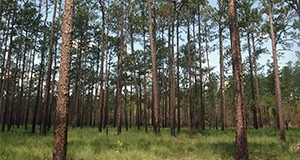
This 7-page fact sheet written by John Dooner and Michael Andreu and published by the UF/IFAS School of Forest Resources and Conservation outlines a process called timber cruising, surveying timber inventory to estimate the current volume and value of a timber stand. The authors explain the process of timber cruising from initial tree-level measurements to the final total stand-level estimates and various methods for conducting the cruise.
https://edis.ifas.ufl.edu/fr426
What Is the Value of an Existing Forest Stand?
Traditionally, the land expectation value (LEV) formula, the present value of perpetual cash inflows of timber revenues minus the present value of cash outflows of costs, has been employed as the main indicator of the value of a forest investment. However, when a forest stand is already established, the LEV approach is incomplete because it applies only to bare land. Thus, it is necessary to determine the value of a property with an existing forest stand. This 3-page fact sheet written by Andres Susaeta and Chris Demers and published by the UF/IFAS School of Forest Resources and Conservation provides the formula to determine the value of an already established forest stand at any stage of its development. This approach, known as the forest value formula, includes the value of the timber and the land. It can be used to compare the value of the stand when it is immediately harvested or when it is economically immature.
http://edis.ifas.ufl.edu/fr423
The Optimal Forest Management of an Even-Aged Stand: The Biological Rotation versus the Land Expectation Value

This 4-page fact sheet written by Andres Susaeta and Chris Demers and published by the UF/IFAS School of Forest Resources and Conservation provides a guide for forest landowners, managers, and stakeholders in conducting a valuation of timber investments. It reviews and provides examples of two different approaches for determining the optimal rotation age of even-aged forest stands. These methods can help forest landowners and managers in making forestry investment decisions.
http://edis.ifas.ufl.edu/fr424
Determining the Net Present Value of Timber Investments and Comparing Investments of Different Rotations
Would a forest landowner be economically better off growing a forest for pulpwood production with a short rotation instead of growing the same forest for sawtimber production with a longer rotation? To help answer this and related questions, this 4-page fact sheet written by Andres Susaeta and Chris Demers and published by the UF/IFAS School of Forest Resources and Conservation presents two approaches to determine the profitability of a forest stand. The net present value (NPV) of a single rotation provides the criterion to choose between different forest project investments of equal lives, whereas the equivalent annuity approach (EAA) is employed when forest project investments have different time lengths.
http://edis.ifas.ufl.edu/fr421
Values and Ecosystem Services of Gainesville’s Urban Forest in 2016
The urban forest is a crucial factor in the well-being of a community because of the aesthetics, health benefits, and cost-savings that it provides. The urban forest is our habitat, and we must manage it in ways that will provide the benefits we need and desire. This 3-page fact sheet written by Michael G. Andreu, Caroline A. Hament, David A. Fox, and Robert J. Northrop and published by the UF/IFAS School of Forest Resources and Conservation describes an urban forest ecological analysis conducted in 2016 in Gainesville, Florida, by the University of Florida in partnership with the Parks, Recreation, and Cultural Affairs Department to quantify the vegetation structure, functions, and values of the urban forest.
http://edis.ifas.ufl.edu/fr414
Hurricane Impacts on Florida's Agriculture and Natural Resources
Hurricanes are capable of affecting almost everything in their paths. Their strong winds and heavy rains can directly impact both inland and coastal areas in short periods that usually last about a day. This new 10-page document reviews basic facts about hurricanes and their effects in Florida and discusses ways they might affect Florida's agriculture and natural resources. Written by Young Gu Her, Ashley Smyth, Pamela Fletcher, Elias Bassil, Ulrich Stingl, Zachary Brym, and Jiangxiao Qiu, and published by the UF/IFAS Department of Agricultural and Biological Engineering, October 2018.
http://edis.ifas.ufl.edu/ae528
Marking First Thinnings in Pine Plantations: Potential for Increased Economic Returns
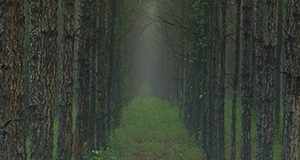
This 3-page fact sheet written by Byron Love, Michael Andreu, and Chris Demers and published by the UF/IFAS School of Forest Resources and Conservation summarizes a study to determine whether landowners may gain increased economic returns if they mark the first thinning in a southern pine stand. The study found that marking can indeed bring higher revenue at final harvest. The greater number of high-quality and faster-growing trees remaining after a marked thinning is the main reason for immediate and future increases in value.
http://edis.ifas.ufl.edu/fr410
Biology and Control of Cogongrass (Imperata cylindrica) in Southern Forests
Cogongrass (Imperata cylindrica (L.) Beauv.) is a Southeast Asian warm-season perennial grass species that has spread to all continents except Antarctica. It is considered among the worst problematic weeds on a global scale. Control of cogongrass is difficult, especially in forests. This 6-page fact sheet written by Patrick J. Minogue, Brent V. Brodbeck, and James H. Miller and published by the UF/IFAS School of Forest Resources and Conservation presents recommendations for control strategies that will work in mixed pine-hardwood forests and pine forests.
http://edis.ifas.ufl.edu/fr411
Genetically Improved Pines for Reforesting Florida's Timberlands
Just as farmers plant the best-available varieties of crops that have been developed through many generations of breeding, forest landowners should plant the best-available genetically improved varieties of pines for reforestation of their timberlands. This 8-page fact sheet written by Timothy L. White, Mary L. Duryea, and Gregory L. Powell and published by the UF/IFAS School of Forest Resources and Conservation explains how planting genetically improved varieties of pines can increase the productivity, health, and value of reforested Florida timberlands.
edis.ifas.ufl.edu/fr007
Florida Trees Store Carbon in Forests and Wood Products
Trees store carbon as they grow and produce wood. Carbon, and carbon storage in particular, have become important topics as policymakers, scientists, and industry leaders consider how to address the increasing amount of CO2 in our atmosphere. Because it changes the composition of the atmosphere, CO2 is a leading contributor to climate change. This 4-page fact sheet written by Adam Maggard, Leslie Boby, and Martha Monroe and published by the UF/IFAS School of Forest Resources and Conservation explains how storing carbon in living trees and in long-lasting wood products such as lumber and furniture can reduce atmospheric CO2. Florida’s forest and wood-product industries are worth billions of dollars. Clean water, wildlife, and other benefits add to the value and importance of these forests.
http://edis.ifas.ufl.edu/fr409
Biscogniauxia (Hypoxylon) Canker or Dieback in Trees
Biscogniauxia canker or dieback is a common contributor to poor health and decay in a wide range of tree species growing in many different habitats, such as forests, parks, green spaces, and urban areas, in Florida. This disease is caused by several species of fungi in the genus Biscogniauxia (formerly Hypoxylon). These pathogens do not typically harm healthy and vigorous trees, but once they infect trees under stress from drought, root disease, soil compaction, construction damage or other causes, they can quickly colonize the tree. Once a tree is infected and fruiting structures of the fungus are evident, the tree is not likely to survive, especially if the infection is in the trunk. This 3-page fact sheet written by Claudia Paez and Jason Smith and published by the UF/IFAS School of Forest Resources and Conservation explains the pathogen’s biology and lists signs and symptoms as well as control measures and ways to keep trees healthy to resist infection.
http://edis.ifas.ufl.edu/fr407
Florida's Forest Stewardship Program: An Opportunity to Manage Your Land for Now and the Future
The Forest Stewardship Program encourages landowners to manage their lands for multiple natural resources, increases public awareness of the importance of Florida’s forestlands, and improves cooperation among natural resource agencies and organizations to meet Florida’s forest resource conservation and management needs. This three page fact sheet written by Mary Duryea, Deborah McGrath, Chris Demers, and Anthony Grossman and published by the School of Forest Resources and Conservation explains the program and its benefits and describes how to become a forest steward.
http://edis.ifas.ufl.edu/fr408
The Value of Private Non-Industrial Forestland for Wildlife Species Conservation
Animals in Florida provide a variety of benefits to people, from recreation (fishing, hunting, or wildlife viewing) to protection of human life and property (oysters and corals provide reef structures that help protect coasts from erosion and flooding). By measuring the economic value of these benefits, we can assign a monetary value to the habitats that sustain these species and assess the value that is lost when development or other human-based activities degrade animal habitat. This 5-page fact sheet written by Shelly Johnson, Timm Kroeger, Josh Horn, Alison E. Adams, and Damian C. Adams and published by the School of Forest Resources and Conservation presents the results of a study that assessed the value of protecting five animal species in Florida and showed the economic value of protecting animal habitat.
http://edis.ifas.ufl.edu/fr405
Timber Production in a Working Forest Context
Working forests are private forests managed not just for timber production but also for a host of valuable ecosystem services like providing for recreation, maintaining habitat for wildlife, and maintaining a healthy watershed. Timber production is an essential ecosystem good or service that supports a number of important industries and provides jobs in Florida. This 6-page fact sheet summarizes the results of several studies to help forest landowners and other stakeholders understand how multiple-use management affects both timber production and other ecosystem services.
http://edis.ifas.ufl.edu/fr406
Carbon Stocks on Forest Stewardship Program and Adjacent Lands
Nonindustrial private forestlands in Florida provide many environmental benefits, or ecosystem services. Ecosystem services are benefits from nature that are directly enjoyed, consumed, or used by humans, such as water quality improvement or protection, recreation, biodiversity, and even timber. Another benefit from forests that is gaining interest is their ability to store carbon through the photosynthetic capture of carbon dioxide, a greenhouse gas, in tree, plant, and soil biomass. The carbon dioxide that is stored over the life of a forest, called carbon stocks, is not only important for mitigating greenhouse gas contributions to climate change, but it can also be valued in several markets and incorporated into environmental policy instruments. This 5-page fact sheet was written by Nilesh Timilsina, Francisco J. Escobedo, Alison E. Adams, and Damian C. Adams and published by the UF Department of School of Forest Resources and Conservation April 2017.
http://edis.ifas.ufl.edu/fr384
The Laccate Ganoderma of the Southeastern United States: A Cosmopolitan and Important Genus of Wood Decay Fungi
Ganoderma Karst. is a large and diverse genus of wood decay fungi that can rot the roots and/or lower trunk of many tree species. There are several laccate (varnished or polished) Ganoderma species that are found in the southeastern United States and this six-page fact sheet provides an overview of the different species. Written by Andrew L. Loyd, Jason A. Smith, Brantlee S. Richter, Robert A. Blanchette, and Matthew E. Smith and published by the Plant Pathology Department.
http://edis.ifas.ufl.edu/pp333
Improving, Restoring, and Managing Natural Resources on Rural Properties in Florida: Sources of Financial Assistance
Interested in conserving natural resources, such as wildlife habitat, or protecting the agricultural heritage of your land? Both federal and state governments have technical and financial assistance programs to help rural landowners achieve natural resource goals. These challenges are addressed through land rentals, technical assistance, cost-shares, and incentive payments and include both time-limited and permanent land-use options.
This 8-page fact sheet written by Chris Demers, Martin B. Main and Mark E. Hostetler and published by the UF School of Forest Resources and Conservation informs landowners about government programs available to help conserve natural resources.
http://edis.ifas.ufl.edu/fr156
Controlling Invasive Exotic Plants in North Florida Forests
Of the more than 4,000 known plant species growing in Florida, approximately 30% are not native to Florida or the Southeast, and in the US invasive exotic species cost an estimated $120 billion each year in damages. Early detection and removal of invasive plants is the key to successful management. This publication describes many of the current methods used in north Florida forest operations to manage invasive exotic plants. It also provides references for additional sources of information. Written by Chris Demers, Patrick Minogue, Michael Andreu, Alan Long, and Rick Williams.
http://edis.ifas.ufl.edu/fr133

